This past weekend, my family visited the Grinnell College Conard Environmental Research Area for the first time. The “365-acre field station used for class field trips, student and faculty research, and quiet enjoyment” is about eleven miles from campus. Staff member Elizabeth Hill showed us around; she is incredibly knowledgeable about Iowa landscapes and native plants. Most of the plants we saw had gone to seed, but I am fired up to return next summer to photograph flowers Bleeding Heartland has never featured before, including round-headed bush clover, tall thistle, field thistle, sawtooth sunflower, false boneset, Virginia mountain mint, tall goldenrod, and showy goldenrod.
Elizabeth is also the accidental godmother of Iowa wildflower Wednesday, though she didn’t realize it until I told her this story. In May 2009, she took my family on a nature hike at Whiterock Conservancy, where she was working. My then three-year-old was fascinated by the Jack-in-the-pulpits–one of very few wildflowers I could identify at that time. My son was excited to hear we had some “Jack flowers,” as he called them, growing near our house in Windsor Heights. That spring and summer, we started looking more closely at the wildflowers in our neighborhood and along local bike trails. Over the next several years, he remained interested in native plants, and I learned the names of more flowers we saw on our walks. In 2012, I thought it would be fun to do a wildflower series here, and Iowa wildflower Wednesday was born. As soon as I could, I put up some pictures of Jack-in-the-pulpits. People often tell me these posts are their favorites at Bleeding Heartland. The full archive is here.
Today’s featured plant is native to most of the United States east of the Rocky Mountains. Goldenrods can be difficult to distinguish, even for experts, but after talking with Elizabeth, I am confident that these plants are elm-leaved goldenrod (Solidago ulmifolia), sometimes called elm-leaf goldenrod. I took the pictures last month at the Kuehn Conservation Area in Dallas County, an under-appreciated spot within easy striking distance of the Des Moines area. I hadn’t heard of Kuehn until a couple of years ago.
Seeing the Prairie Cairn by Andy Goldsworthy was a highlight of our visit to the reconstructed prairie at Conard Environmental Research Area. At the end of this post, I’ve enclosed a picture of some skin a snake shed while slithering through the cairn’s rocks.
For a botanically accurate description of elm-leaved goldenrod foliage and flowerheads, check out the Kansas Wildflowers and Grasses site or the Illinois Wildflowers site.
Elm-leaved goldenrods are usually less than three feet tall, shorter than many goldenrod plants. They seem to tolerate more shade than the goldenrods often seen growing along roadsides. These plants were growing along a shady wooded trail that leads from the Kuehn Conservation Area nature center toward the river.
As the common name implies, elm-leaved goldenrods have leaves on the lower part of the plant that resemble leaves of American elm trees, “but more narrow and thin-textured.”
That plant didn’t have many branches, but some elm-leaved goldenrods have several branches with flowerets.
This shot shows both the leaves and flowerets in clearer focus.
Top view of a plant:
As with all members of the aster family, what may appear to be individual flowers are actually flowerets with ray and disk flowers. The Illinois Wildflowers website notes, “Each flowerhead is about 3 mm. (1/8″) across, consisting of several ray florets (3-8) that surround a similar number of disk florets.”
Closer views of flowerets (some not fully open):
Flowerets may start blooming near the edges of the branches, rather than near the stem:
The light blue flowers you can see near the edges of this shot are some kind of aster–possibly sky-blue aster, though I’m not sure.
More elm-leaved goldenrod growing near what looks like sky-blue aster.
Elm-leaved goldenrod thrives in a range of habitats:
Habitats include mesic to upland woodlands, woodland edges, thinly wooded bluffs, edges of limestone glades, partially shaded banks of rivers, and thickets. This goldenrod can spread to edges of lawns in semi-shaded areas from adjacent woodlands. It is found in both higher quality and degraded habitats.
A wide variety of insects either visit elm-leaved goldenrod flowerets or feed on its foliage. Some mammals also eat the foliage, and some birds eat the seeds.
Other goldenrods had quite a few uses in traditional medicine, but elm-leaved goldenrod does not appear to be one of them. According to Kansas Wildflowers and Grasses, “Native Americans would revive someone who was unconscious with the smoke of the smouldering plant.”
Snakeskin hanging off the the Prairie Cairn by Andy Goldsworthy at Conard Environmental Research Area, near Grinnell, Iowa.

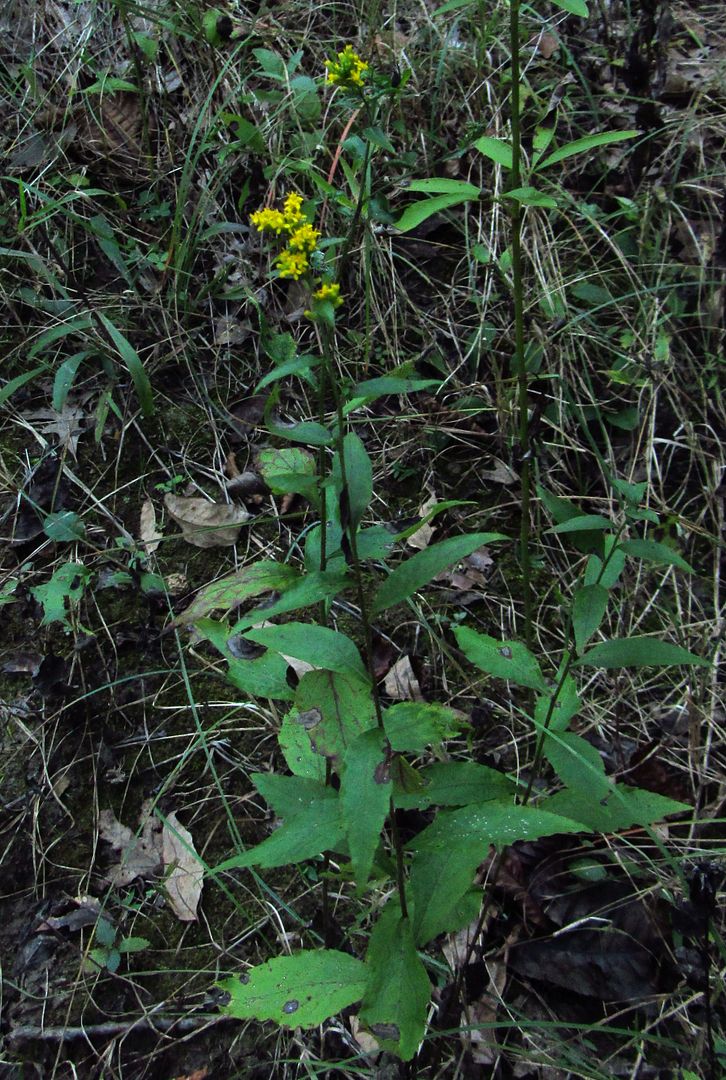
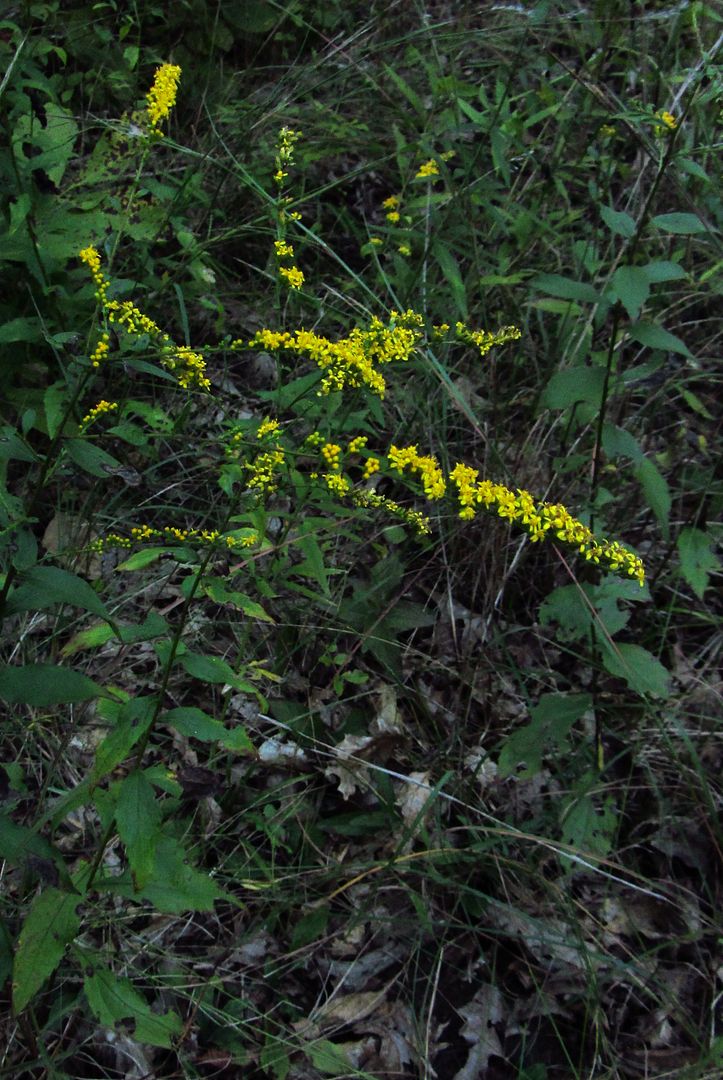
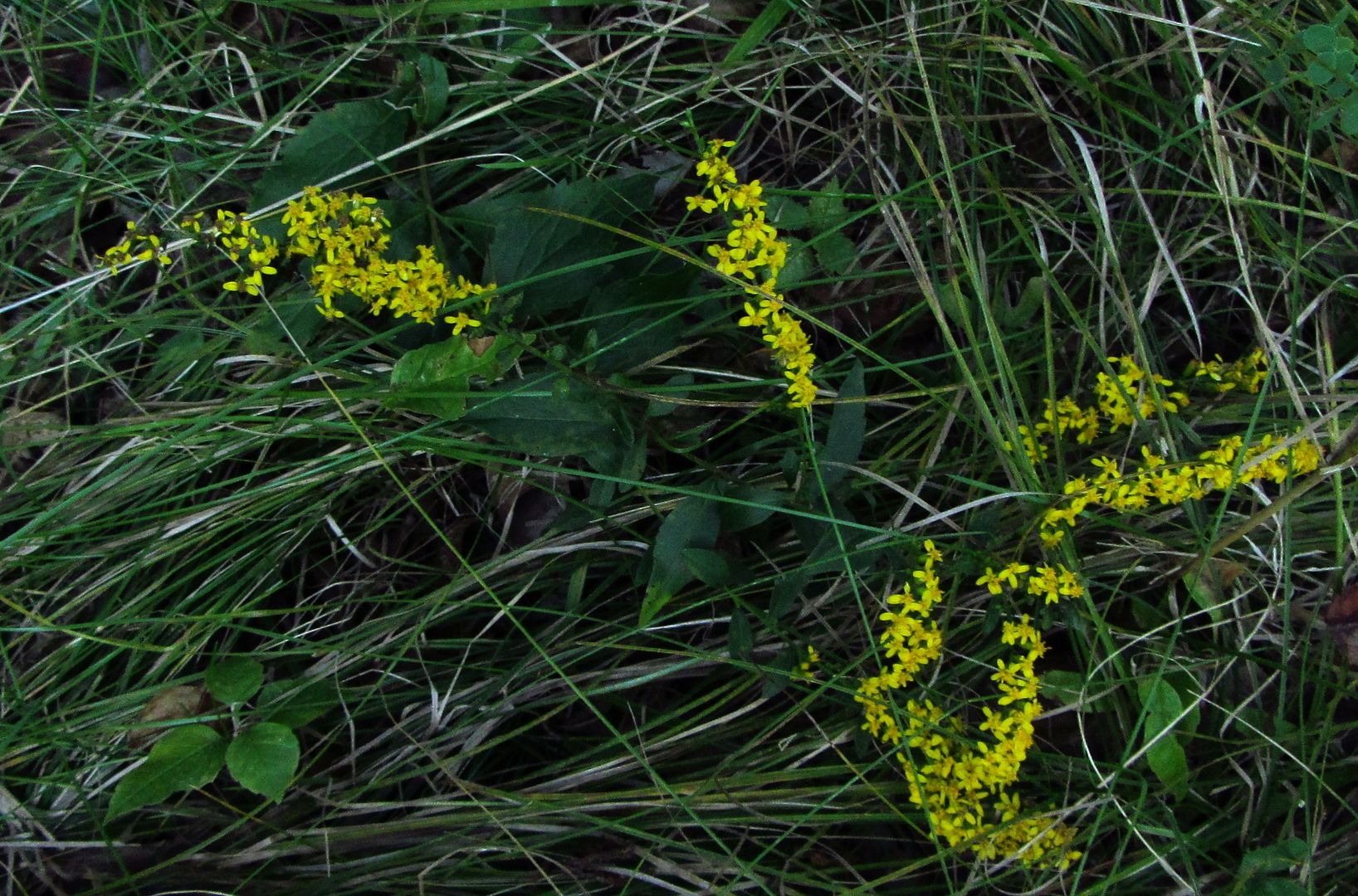
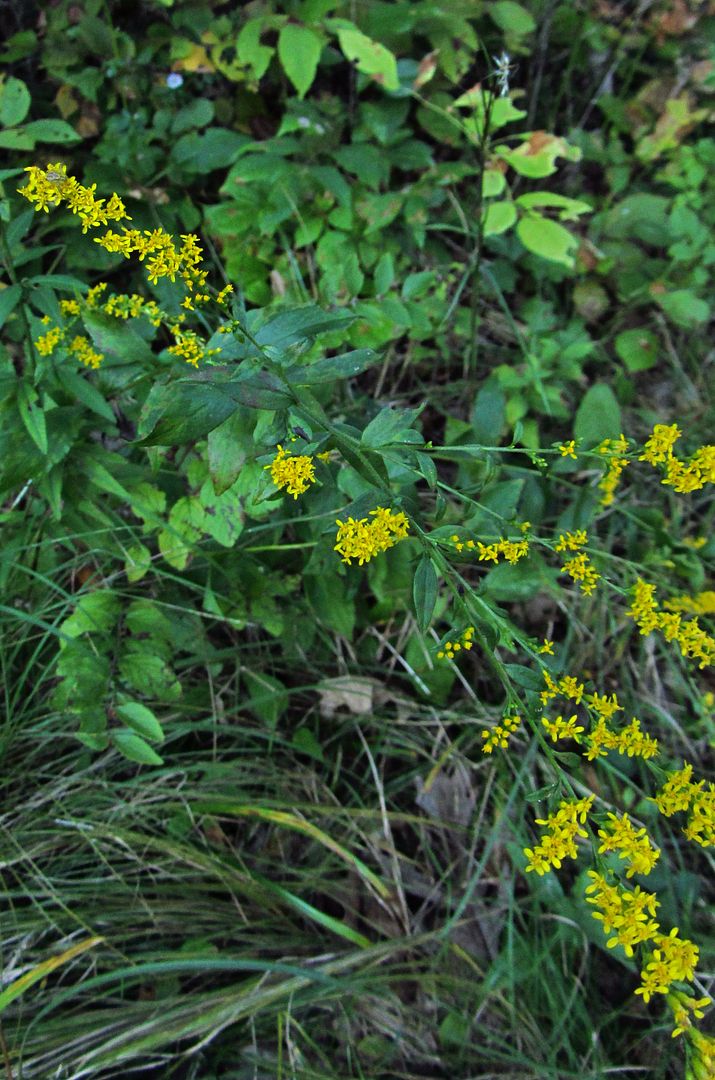
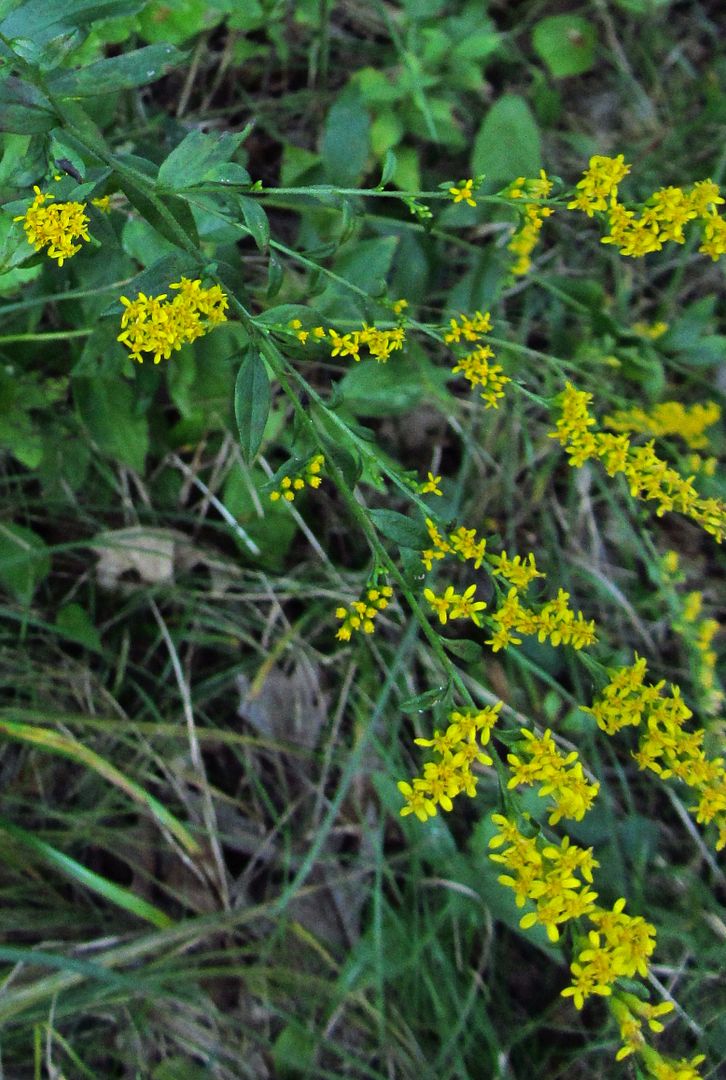
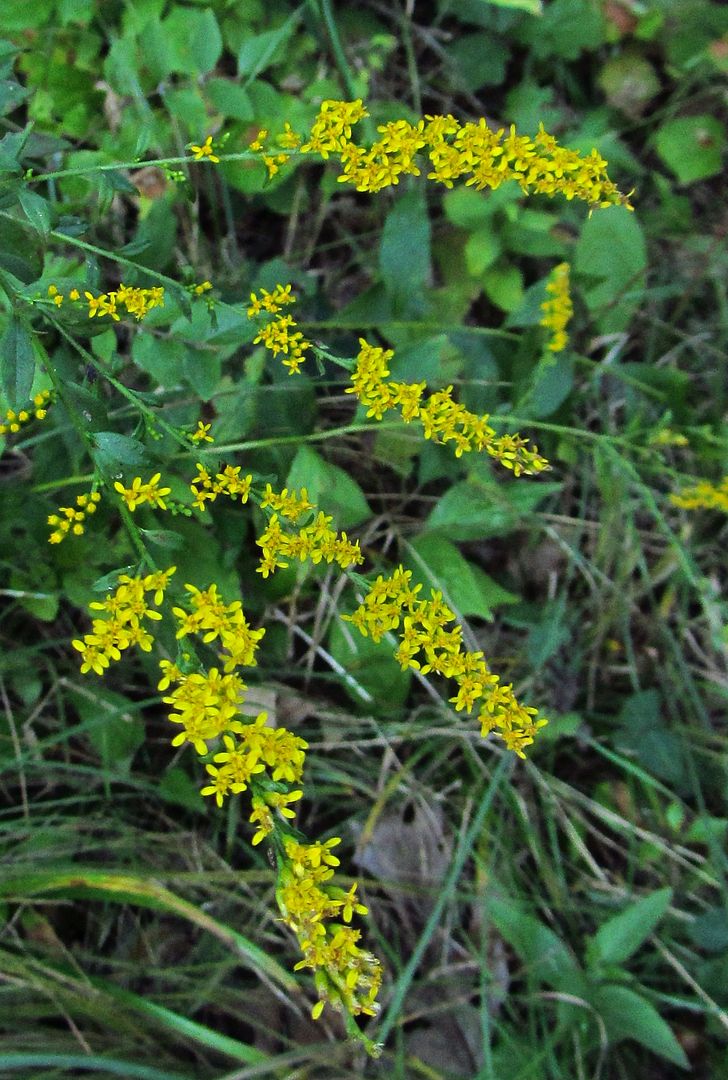

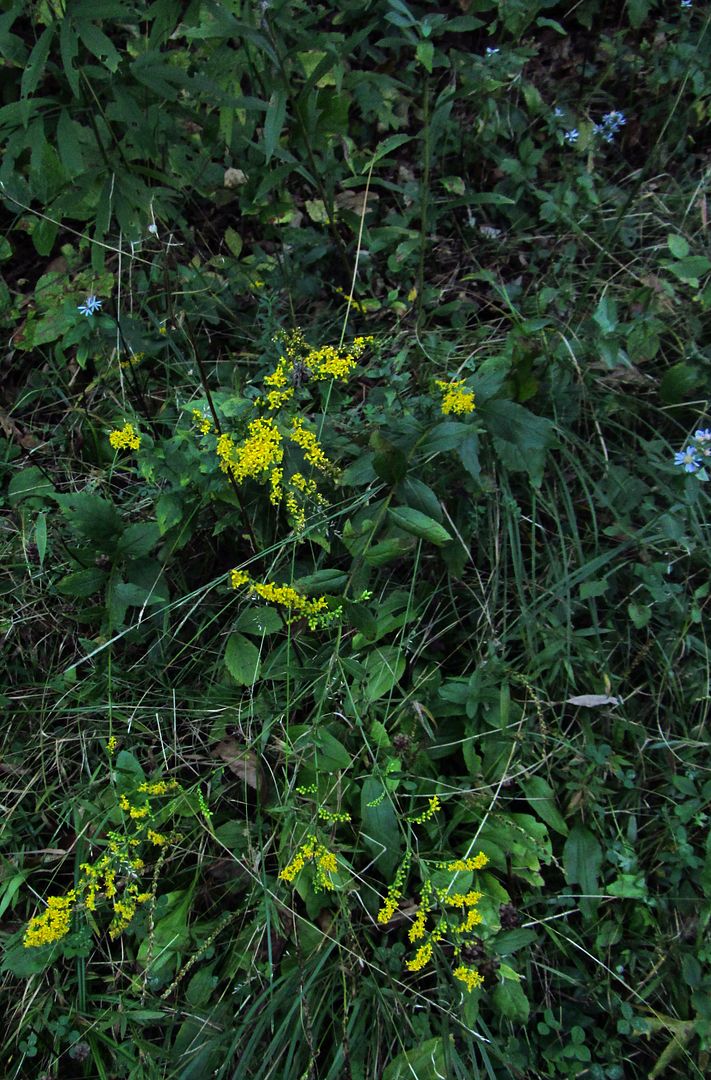
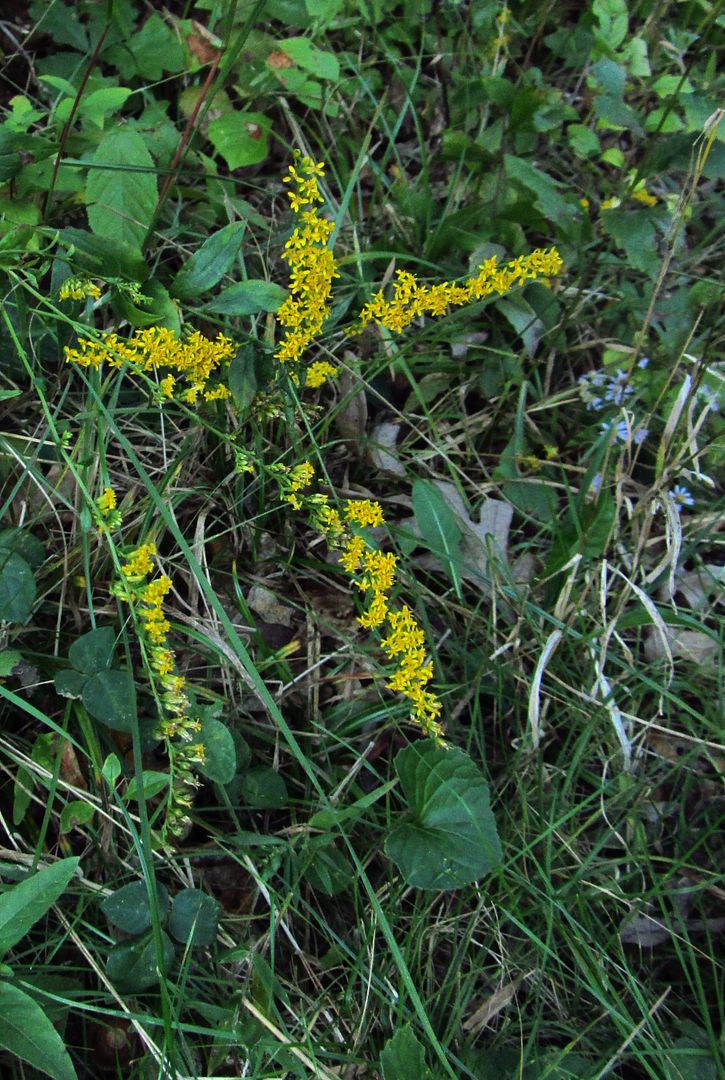
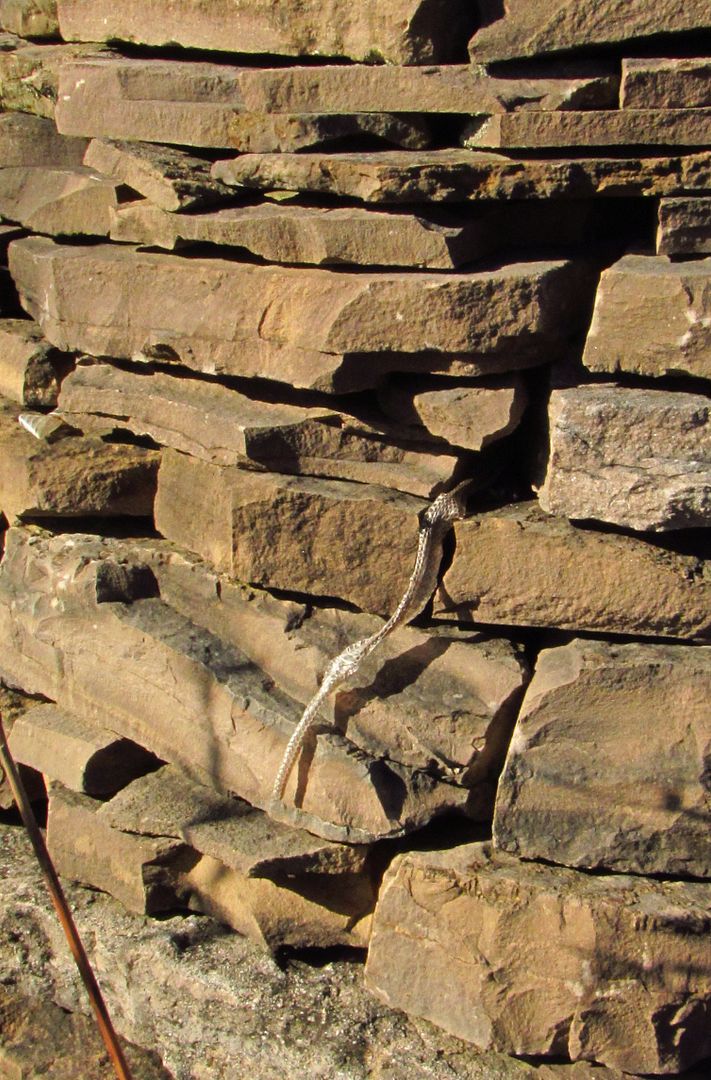
1 Comment
Thanks for the memories...
I saw the Prairie Cairn and loved it when I visited Conard a couple of years ago.
PrairieFan Sat 29 Apr 12:43 AM